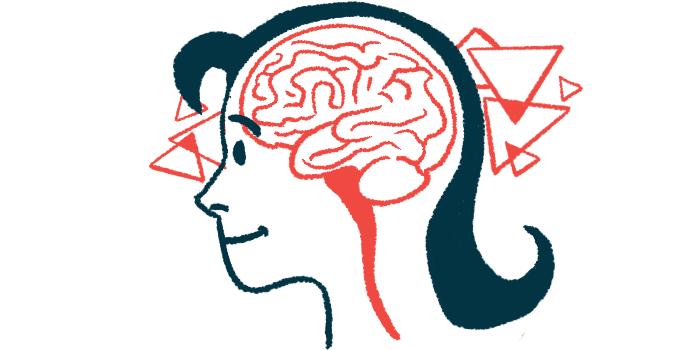Transplant using young and healthy glia cells may treat Huntington’s
Healthy cells replace diseased ones in brains of adult mice, with youth likely key

When young, healthy progenitors of neuron-supporting cells called glia are transplanted into the adult brain, they can grow and replace diseased glial cells, including those carrying a Huntington’s disease-causing mutation, a study in mice reports.
“These findings have strong therapeutic implications, as they suggest that in the adult human brain, resident glia — whether diseased or simply aged — may be replaced following the introduction of younger and healthier cells,” Steve Goldman, MD, PhD, the study’s senior author and co-director of the University of Rochester’s Center for Translational Neuromedicine, said in a university press release.
As such, healthy human glial progenitor cells (GPCs) may offer a viable way of treating Huntington’s and other neurological disorders characterized by problematic glia, the researchers noted.
“A broad variety of disorders we associate with neuronal loss now appear to be caused by dysfunctional glial cells,” Goldman said, adding that “this makes these diseases attractive targets for stem and progenitor cell-based therapies.”
Potential seen in type of stem cell therapy for Huntington’s disease
The study, “Young glial progenitor cells competitively replace aged and diseased human glia in the adult chimeric mouse brain,” was published in Nature Biotechnology.
The nervous system contains neurons alongside a class of neuron-supporting cells called glia. While neurological disorders like Huntington’s have long been presumed to mainly affect neurons, accumulating evidence also assigns key roles to glia in these diseases.
Within the brain, new glia derive from a specialized type of stem cell called glial progenitor cells. Theoretically, replacing diseased or aged GPCs with healthy cells could treat Huntington’s and other conditions affecting glial cells.
Previous studies done by Goldman’s team showed that healthy human glial progenitor cells transplanted into a mouse model of Huntington’s can replace diseased mouse GPCs and delay disease progression. But, it hasn’t been clear whether they could replace diseased human GPCs in a similar manner.
Goldman and colleagues at Rochester and the University of Copenhagen, in Denmark, tested this possibility using mice engineered at infancy so that most GPCs in their striatum — a brain region heavily affected in Huntington’s — were human GPCs derived from a woman with Huntington’s.
The patient-derived cells carried a disease-causing mutation in the HTT gene.
Researchers then tested whether young, healthy human GPCs could replace their disease counterparts in adult mice.
Results showed that indeed they could: After these human GPCs were implanted into the adult mice’s striatum, the healthy cells gradually grew and replaced the diseased human GPCs.
Transplanted healthy glial progenitor cells ‘kicked out’ diseased ones
“In the striatum, our target area, the healthy cells essentially kicked out the disease cells, eventually replacing the glial progenitor population entirely,” Goldman said, adding that “you can actually see a wave of migration and a border where the cells [carrying] the HTT mutation are dying off and being replaced by heathy ones.”
The researchers noted that the replacement of diseased human GPCs with healthy human cells was slower than the mouse-to-human replacement seen in previous studies, suggesting some differences between species may affect these processes.
A next battery of tests aimed to understand the biological mechanism by which healthy human GPCs could replace their diseased counterparts. Results showed that, compared with the diseased cells, healthy GPCs grew more quickly and activate pathways driving protein production and genes involved in cell growth.
“These data suggest that the implanted [healthy human GPCs] actively assumed a competitively dominant [profile] upon contact with their [Huntington’s] counterparts, to drive the latter’s local elimination while promoting their own expansion and colonization,” the researchers wrote.
The researchers also noted that, in most of these experiments, the healthy human GPCs used were freshly created cells — so by definition, the cells themselves were younger than the older cells already in the mice’s brains.
Transplanted cells’ relative youth possibly more important than health
Further tests showed that young, healthy human GPCs could outcompete and replace older, healthy human GPCs in the mice’s brains, similar to how they outcompeted Huntington’s mutant glial progenitor cells.
This suggests that the transplanted cells’ young age, not necessarily their healthy status, may be a main determinant of their ability to replace existing, older cells.
While the mouse model used here may better reflect human disease than previous models, it is still “an inherently artificial system,” the team wrote. “Until human GPCs are transplanted into patients, we cannot be entirely sure that glial replacement will proceed as robustly as in our … model.”
Still, “our results suggest that glial progenitor cell delivery and glial replacement may offer a viable and broadly applicable strategy toward the cell-based treatment of those diseases of the brain in which glial cells are causally involved,” the scientists concluded.








